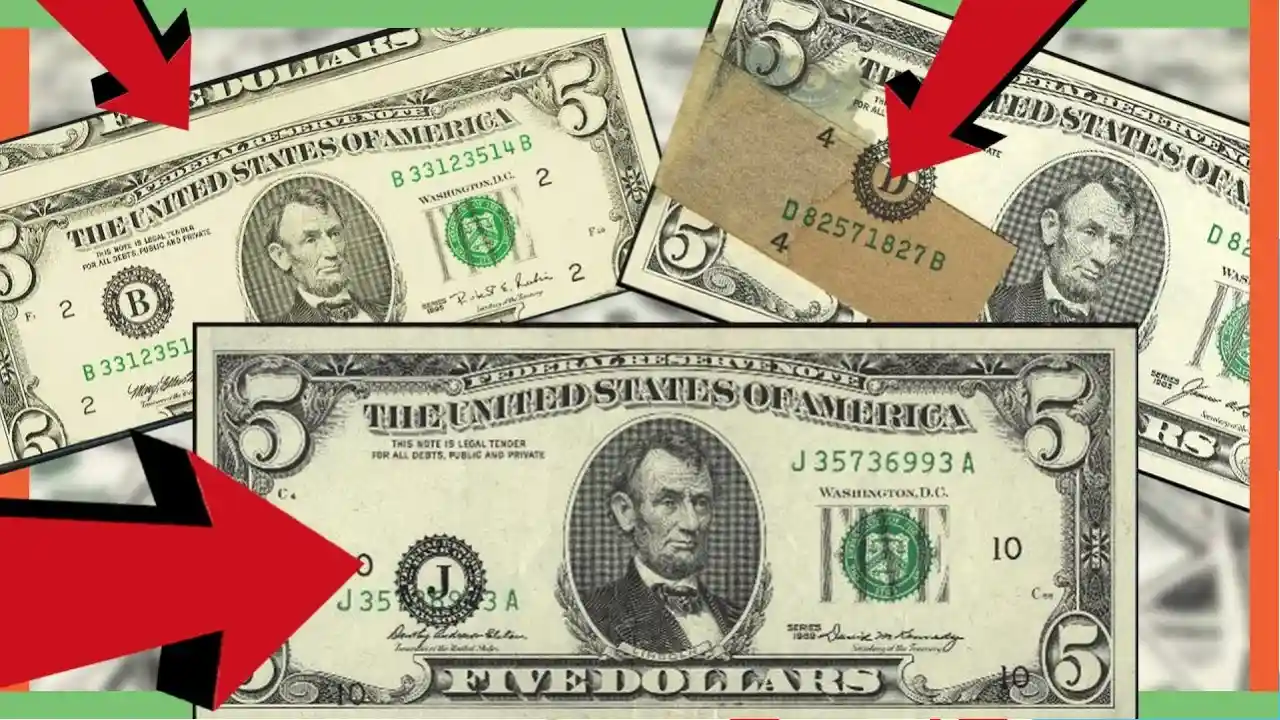Rare $5 Bill Are you holding onto a simple $5 bill in your wallet or piggy bank? Don’t be too quick to spend it—it might be worth a fortune! Believe it or not, certain rare $5 bills are highly valuable and can fetch hundreds or even thousands of dollars in the collectors’ market.
In this article, we’ll help you identify the signs of a valuable $5 bill, how to check serial numbers, what errors to look for, and what makes these bills so special.
Why Are Some $5 Bills So Valuable?
While most $5 bills are worth exactly five bucks, some are rare due to printing mistakes, unique serial numbers, age, or limited releases. Collectors are always on the hunt for rare currency, and if you’ve got a special note in good condition, it might be your lucky day!
Top Reasons Why Your $5 Bill Could Be Worth Thousands
One of the first things to check is the serial number on the bill. Valuable patterns include:
| Type of Serial Number | Example | Estimated Value |
|---|---|---|
| Solid Number | A55555555A | $2,000–$3,000 |
| Repeater | C23232323C | $500–$2,000 |
| Radar (Palindromic) | E12344321E | $300–$800 |
| Low Serial Number | F00000008F | $500–$1,500 |
| Star Notes (*) | B12345678* | $100–$3,000+ |
Star notes are replacements for damaged bills and are often more limited in print.
Printing Errors and Misprints
Printing mistakes can make your bill extremely valuable. Look out for:
-
Mismatched serial numbers
-
Missing seal or serial
-
Off-center print
-
Upside-down back
-
Double denomination printing
Old Series and Historic Notes
Older bills from the early 1900s or before the Federal Reserve System was established may be collectible, especially if they have:
-
Red, brown, or blue seals
-
Dates like 1890, 1914, or 1928
-
“Silver Certificate” or “United States Note” wording
An 1890 $5 Treasury Note recently sold for $282,000 at auction!
Special Issue Notes
During World War II, special notes were printed for Hawaii and North Africa. These had different security features and are rare today.
-
Hawaii overprint notes (1942–1944): $800–$3,000+
-
North Africa yellow seal notes: $600–$2,000+
How to Check If Your $5 Bill Is Valuable
Follow these steps:
-
Look at the Serial Number
Is it repeating, low, solid, or ending in a star (*)? -
Examine for Errors
Use a magnifying glass and light to inspect for faded ink, misprints, or alignment issues. -
Check the Series Year
Is it an older note like 1928, 1953, or 1934? -
Condition Matters
Crisp, uncirculated bills are worth far more than folded, torn, or stained ones.
If you think your bill is valuable, don’t rush to your local bank. Instead:
| Platform | Best For | Pros |
|---|---|---|
| eBay | Quick resale | Global audience |
| Heritage Auctions | High-value rare bills | Expert grading |
| Local Coin Shops | Fast evaluation | In-person check |
| Currency Shows | Meeting collectors | Appraisal and bidding |
Pro Tip: Always Take High-Quality Photos
When selling or listing your bill, clear front and back images help potential buyers or experts evaluate its worth.
Q1. What is the most valuable $5 bill ever sold?
A: A double-denomination error bill ($5 front, $10 back) sold for $44,000!
Q2. How can I tell if my $5 bill is a Star Note?
A: Check if the serial number ends with a “*” (e.g., G12345678*).
Q3. What is the best year to look for rare $5 bills?
A: Bills from pre-1963, especially those labeled as Silver Certificates or United States Notes, are most valuable.
Q4. Do all old $5 bills have high value?
A: Not always. Value depends on rarity, condition, and collector demand—not just age.
Q5. Can I spend a rare $5 bill at the store?
A: Technically yes, but you could lose out on thousands. Always check first!
Final Thoughts
Before you spend that wrinkled $5 bill, take a closer look. A seemingly ordinary note might have a secret—a unique serial number, a printing flaw, or a historical origin that makes it worth a small fortune.
Collectors all over the U.S. are actively searching for these rare pieces of currency history. With just a few minutes of your time, you could turn that $5 bill into $500, $5,000, or even
